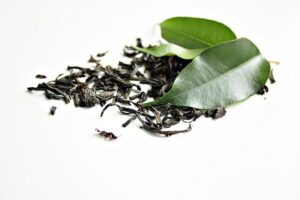 Green or black tea is brimming with heart-healthy benefits.
Green or black tea is brimming with heart-healthy benefits.
Green tea is rich in catechins, which are antioxidants that can help lower cholesterol and keep arteries clear. Black tea, on the other hand, contains flavonoids that can help reduce blood pressure. So which type of tea is best for you?
If you’re looking to lower cholesterol, green tea is a good choice. Green tea contains catechins, which help to keep arteries clear. Black tea also contains flavonoids, but in smaller amounts.
If you’re looking to reduce blood pressure, black tea may be a better choice. Black tea contains more flavonoids than green tea, and these compounds can help reduce blood pressure. Green tea does contain some flavonoids, but in smaller amounts.
So, what’s the bottom line? Both green and black tea offer benefits for heart health. (See my home-brewed recipe below)
Compounds in green or black teas have a healthful impact on several markers of heart disease risk, but debate continues as to which kind of tea is healthiest.
Recent research suggests it may be a dead heat. In a study, green and black tea appeared equally protective against fatty arterial plaque buildup.
Green tea has also been linked to a number of health benefits, including weight loss. Green tea contains catechins, which are antioxidants that can help boost metabolism and burn fat. One study showed that men who took green tea extract burned more calories than those who didn’t. Green tea also seems to help keep blood sugar levels stable, preventing spikes and crashes.
Black, oolong, and green teas are all made from the leaves of the Camellia sinensis plant. The difference between green and black tea is the level of oxidation the tea leaves experience during processing. Green tea leaves are not oxidized, while black tea leaves are fully oxidized. Oolong tea lies somewhere in between, with partially oxidized leaves.
The oxidation process alters the flavor of the tea, as well as the nutritional content. Green tea is generally considered the healthiest of the three, as it contains the highest levels of antioxidants. Black tea, on the other hand, has been linked to some health benefits, including improved heart health and reduced risk of stroke.
Tea is produced by plucking the young leaves and leaf buds from the Camellia sinensis plant. The leaves are then processed to stop oxidation and drying.
Black tea also has some health benefits, although not as many as green tea. Black tea contains flavonoids, which are antioxidants that can help protect against heart disease and cancer. Black tea has also been shown to improve mental alertness and lower stress levels.
So, again, green or black tea…
Which tea is better for you? Both have their own unique set of health benefits.

Reji Jacob at ml.wikipedia, CC BY 3.0, via Wikimedia Commons
About the tea plant:
The tea plant Camellia sinensis is a member of the evergreen family. The leaves and leaf buds of Camellia sinensis are used to produce tea. There are two main varieties of Camellia sinensis:
- Camellia sinensis var. sinensis, which is native to China and produces small-leafed tea
- Camellia sinensis var. assamica, which is native to Assam, India and produces large-leafed tea
The Camellia sinensis plant is an evergreen shrub or small tree that can grow to a height of 15 meters (49 feet). The leaves are dark green, leathery, and elliptical in shape. The flowers are white and fragrant, with yellow stamens.
The Camellia sinensis plant is native to China and India, but it is now cultivated in many countries around the world. Tea is the most widely consumed beverage in the world, after water.
How much tea is recommended in moderation?
Most experts recommend drinking no more than four cups of tea per day. This is considered to be moderate intake. Green tea generally contains less caffeine than black tea, so it may be a good choice if you’re looking to cut back on your caffeine intake. Drinking more than four cups of tea per day is considered to be excessive and can lead to side effects such as insomnia, anxiety, and irritability.
My iced tea recipe:
While it’s not my only talent (LOL), I am quite well-known for my home-brewed iced tea. I make it fresh about every two or three days (and make extra if I know guests are coming by – they always want some). My recipe is simple:
- one larger size tea bag of orange and black pekoe (you can use Lipton or other brand),
- one regular bag of black tea (Red Rose or other brand),
- and two smaller bags of organic green tea,
- two quarts (8 cups) of nearly boiling water (don’t let it boil),
- steep for two hours.
Pour into a container (I prefer closable glass containers) and serve over ice. Keep refrigerated.
If you buy bulk teas, I recommend these muslin bags because the two sizes are perfect for this recipe.

 Green or black tea is brimming with heart-healthy benefits.
Green or black tea is brimming with heart-healthy benefits.